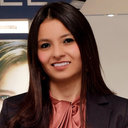Consumer perspective

Paola Pérez
Strategic Marketing Manager, Global B2C
Lubrizol Life Science Beauty | Spain
Bio...
Roz Wicks is an expert Marketer within the fragrance industry. After working for 2 global fragrance manufacturers she founded her own agency TrendAroma Marketing in 2016, and has now been working in the fragrance industry for almost 20 years. Roz spends a lot of her time researching, translating and forecasting trends for new fragrance concepts, putting together market insights for product development teams and working on the marketing needs of companies in the fragrance sector.

Makeup is one of the most dynamic categories in social media, with brands being talked about regularly in user-generated content. This content provides an invaluable opportunity for formulators and brands to gain a deeper understanding and insight into consumer pain points and beauty trends.
Understanding the value of this insight, between May 2019 and May 2020, the Foresee Lab™ within Lubrizol Life Science Beauty utilized Artificial Intelligence technology to extract the most relevant beauty conversations. They analyzed 20 million sources from across the internet, including social platforms, forums, and reviews, for beauty conversations related to the face, eyes, lips, and nails. An expert team then analyzed the data in different ways, clustering and extracting patterns and trends.
Data was analyzed in several ways, including by top search terms and beauty hashtags. For example, the study revealed one relevant trend when the model analyzed makeup conversations. Although the top general beauty hashtag is #makeupartist, when consumers used a personal pronoun like “I love” or “I use,” the top hashtag is #skincare. It reveals the increasing trend of connecting makeup and skincare.
Data also was analyzed by the sheer volume of posts. For example, the face consistently had the highest volume of posts, while eye products showed a relatively flat baseline of posts during the same time period, but as the pandemic was extending, posts increased. Gloss, liner, and oil showed notable increases in the lip category because of use at home and during video conference calls. On the opposite end of the spectrum, a marked decline is the nail category. Polish, topcoat, and base coat all showed a marked decline.
These extensive analyses of social media content revealed different trend talks, here some of them:
A quest for the “Holy Grail”: When applying the products they use and rely on every day (or most days), consumers want best-in-class performance in texture, finish, and application. They sacrifice one attribute to satisfy another, continuously buying new brands and products until happy, and they subscribe to beauty boxes or travel sizes to sample before buying full-sized items. This helps them purchase their core products time and time again and eliminates the risk of being dissatisfied.
Showing my best across the day… : After applying makeup and then going about their day, consumers want makeup to stay in place and not transfer to other areas of their face or other surfaces, like their clothing or face mask. This is so they can feel confident in their appearance without fearing something is out of place. They will use other products to stop the spread, like powder on the undereye, concealer on the eyelid to prime before eyeshadow, and setting spray to avoid transfer onto other surfaces.
… while keeping a natural look: On an average day (not for an event), when consumers wear makeup, they want a natural appearance that enhances their features and hides imperfections in a not-so-obvious way. This is so they can feel like a more beautiful version of themselves without feeling hidden by makeup, giving others the illusion that this is what they always look like. Using products in unintended ways to achieve a less dramatic look (for example, brow pencil as eyeliner, brow gel as mascara) and using cream/liquid versions of products is common.
And healthy skin first… : When consumers apply facial cosmetic products, they want healthy, clear, even, hydrated skin as the base of application. This is so they can evenly and easily apply makeup while improving long-term skin health at the same time. They adopt an extensive skincare routine and use more product to cover imperfections when these options aren’t available
These findings give brands the opportunity to develop makeup products that truly resonate with consumers and solve the things they don’t like in existing face, eye, and lip products. The research takes the guesswork out of the equation, increasing the likelihood that consumers will try a new makeup product and fall in love with it. Artificial intelligence has given us a window into trendy conversations that previously wasn’t available.
To learn more, please click here.
Using AI to extract key trends and insights from social media content
Paola Pérez has worked in the beauty industry for 14 years and is passionate about launching new brands and products. During her career, Paola has helped to bring to life more than 150 new products and sub-brands. She has a bachelor’s degree in industrial engineering and two master’s degrees in marketing and sociology.



